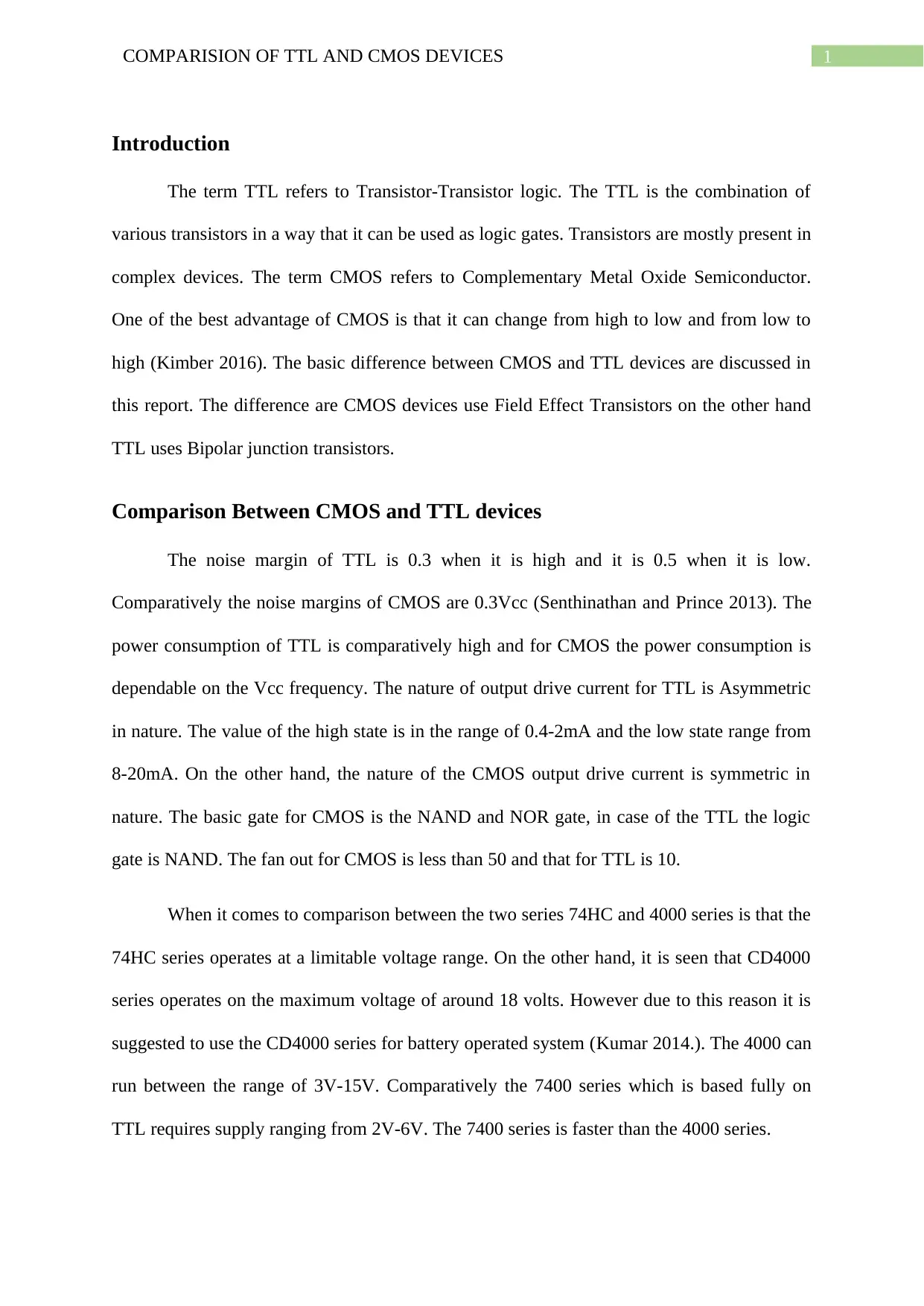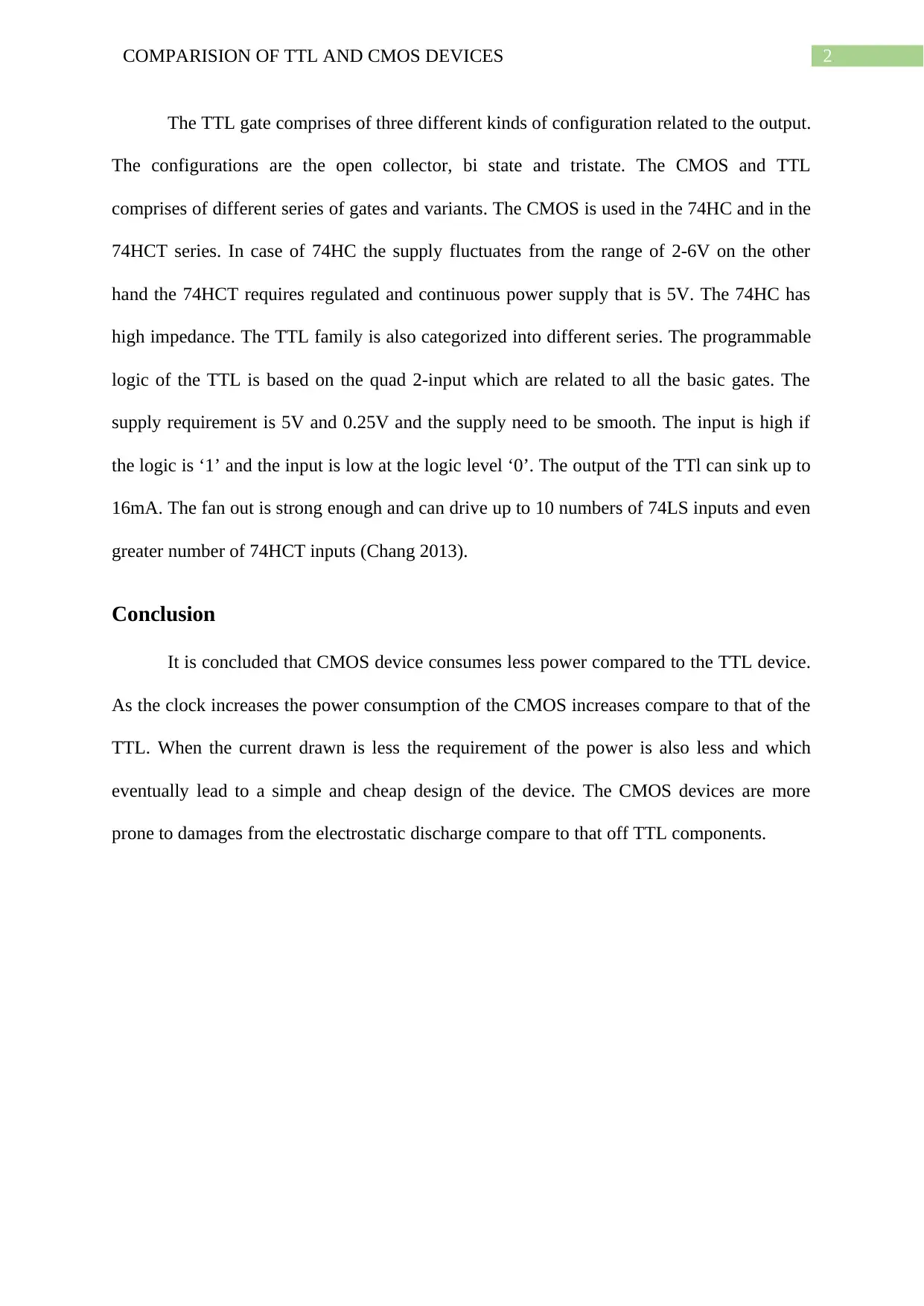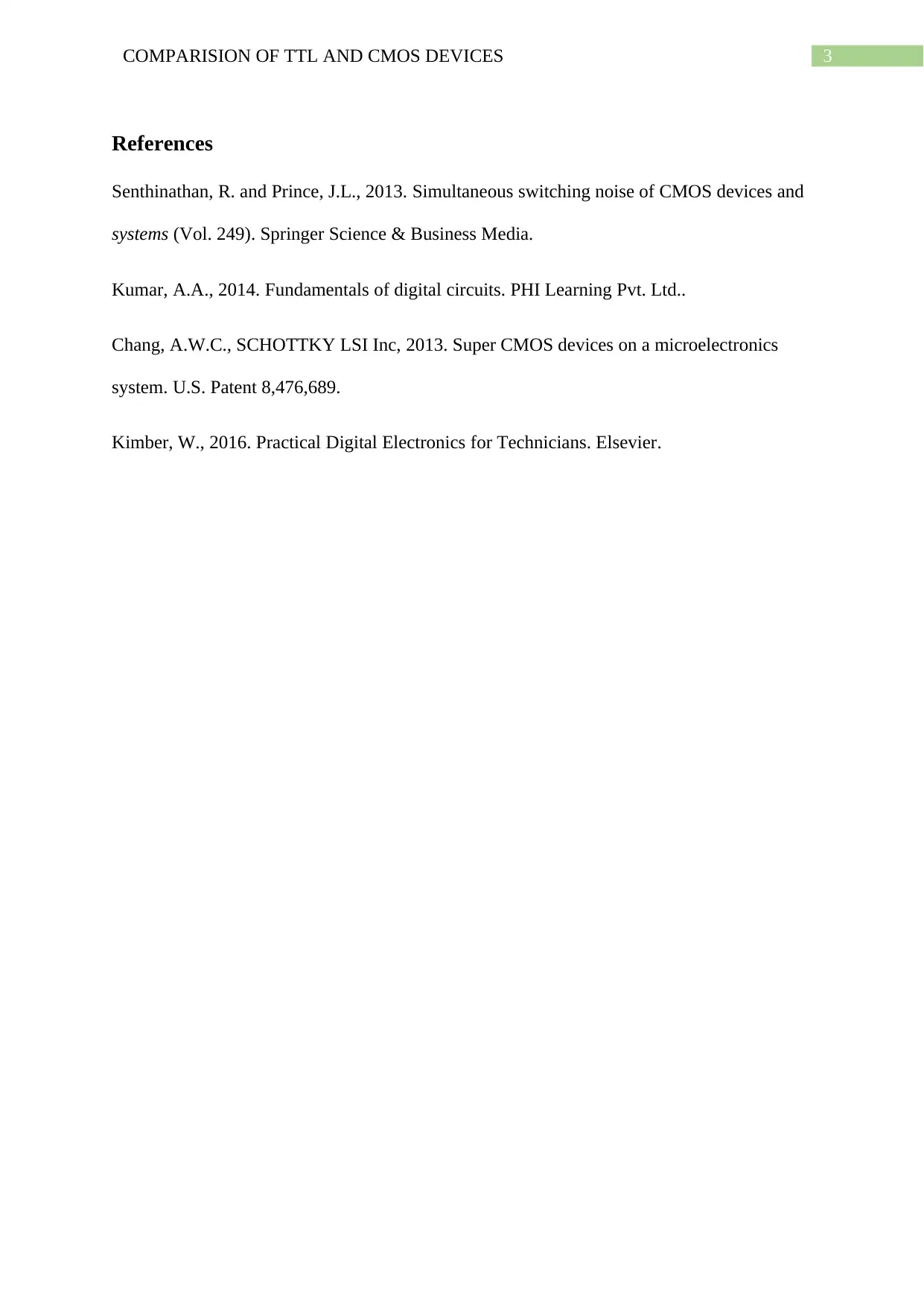University of ABC, EE 101: Detailed Comparison of TTL and CMOS Devices
VerifiedAdded on 2023/01/03
|4
|769
|33
Report
AI Summary
This report provides a comparative analysis of TTL and CMOS devices, essential components in digital electronics. It begins with an introduction to both TTL (Transistor-Transistor Logic) and CMOS (Complementary Metal Oxide Semiconductor) devices, highlighting their fundamental differences. The report then delves into a detailed comparison, examining key aspects such as noise margins, power consumption, output drive current, and the types of logic gates used. It also contrasts the 74HC and 4000 series, discussing their voltage ranges and suitability for different applications, including battery-operated systems. Furthermore, the report explores the fan-out capabilities of both CMOS and TTL, and the various configurations of TTL output. The report concludes by summarizing the advantages of CMOS in terms of lower power consumption, while also noting its increased power consumption with higher clock speeds and its susceptibility to electrostatic discharge. The report references several sources to support its findings.
1 out of 4







![[object Object]](/_next/static/media/star-bottom.7253800d.svg)